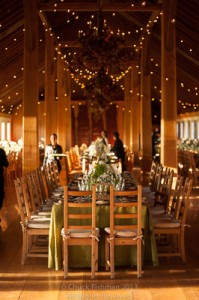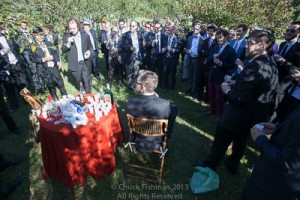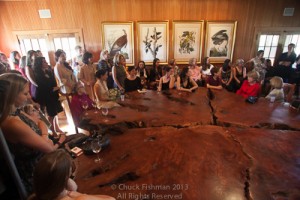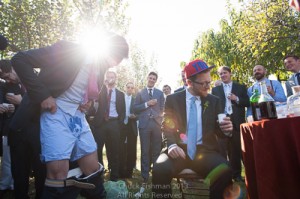With young adults spending an increasing number of years out of wedlock, preparation for marriage is ever more elaborate: Bachelor and bachelorette parties in North America are notorious for distracting brides- and grooms-to-be with alcohol and promiscuity. Celebrations of a similar nature are called stag and hen nights in England. In traditional German circles, friends and relatives of wedding couples smash dishes on so-called Polterabend (English: rowdy evening). In modern ones, the couple and their friends careen through city streets with flashy paraphernalia, printed t-shirts, and plastic trumpets.
Currently, a group of young Jews in the US are adapting an eastern European pre-marriage tradition, called tisch (Yiddish: table, short for chosson’s tisch, or groom’s table).
This new old ritual is possibly related to a Chassidic custom which bears the same name, and which cultivated the relation between a rabbi and his community. A tisch congregates the prospective groom among his (male) friends and relatives, including the rabbi who will marry him. If he can, the groom recites or comments on the daily afternoon service, while the men interrupt him with laughter, drinking, songs and heckles – to drown out possible mistakes, to ease tension, or for general merriment.
At a carbon-neutral “green” wedding on a farmhouse just outside of New York last month, a tisch was held, but it was adapted to be gender-equal: On the wedding afternoon, the party divided into groups of men and women for pre-matrimonial consultation. The women surrounded the bride in a separate room to extend well-wishes, tell anecdotes, cite quotes, give advice on marriage, and sing and pray together. The bride at this particular wedding did not display much marriage-related tension, so the advice to her was more poetic than practical: Saint-Exupéry was quoted, as was Shakespeare.
I can’t say exactly what the men did, because they convened far away, in the garden. But from hearsay, the groom gave a dvar Torah (a commentary on the weekly Torah reading) while the men distracted him by enticing him to sing, and dropping their pants. Clearly they were in good spirits, because the groom returned wearing a baseball cap with the letters YOLO: You Only Live Once.
As communicated by e-mail in advance, the tisch intended to activate a support-network for the bride and groom and to provide endorsement of their union. But as it was carried out, its purpose lay perhaps more importantly in strengthening the community than the couple: This tisch involved a large group of people in an old Jewish tradition with a purpose and a responsibility – for the individuals, for the couple, and for marriage in general.
Given that marriage and the (non-orthodox) US Jewish community are no longer the decisive social structures they used to be, reviving this old tradition seems to be a purposeful and popular method to bolster both.
Naomi Lubrich, Media




Nice one!